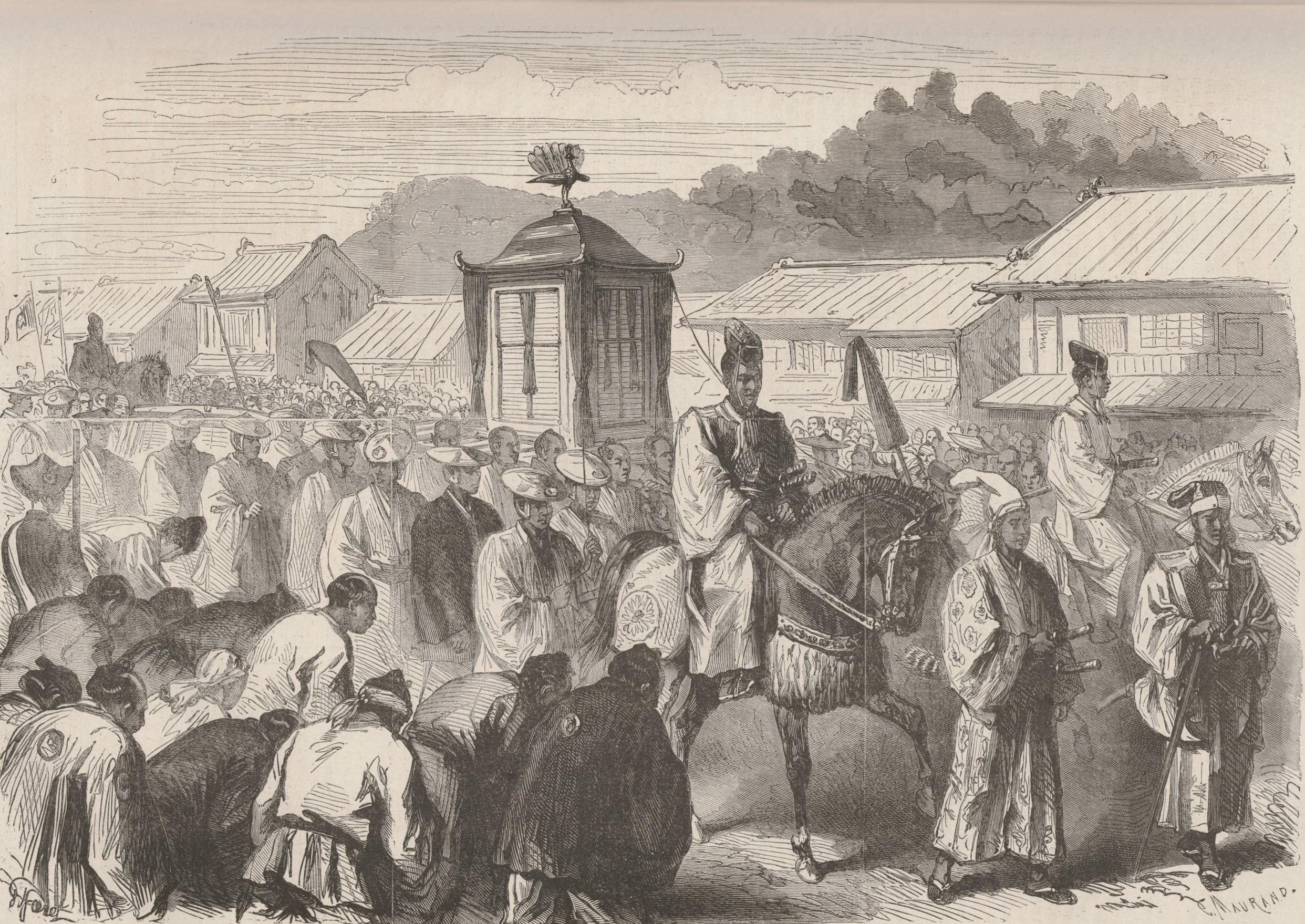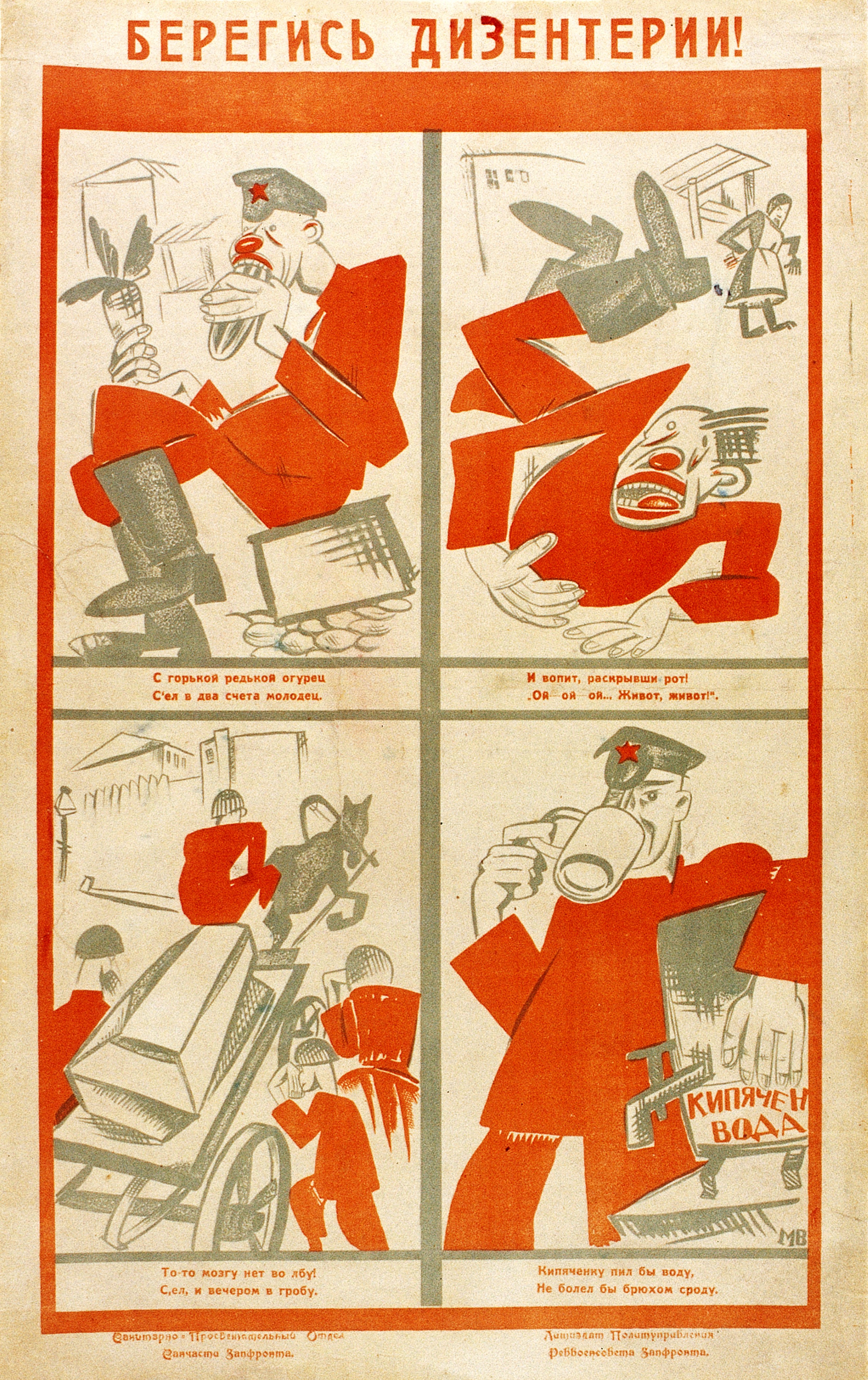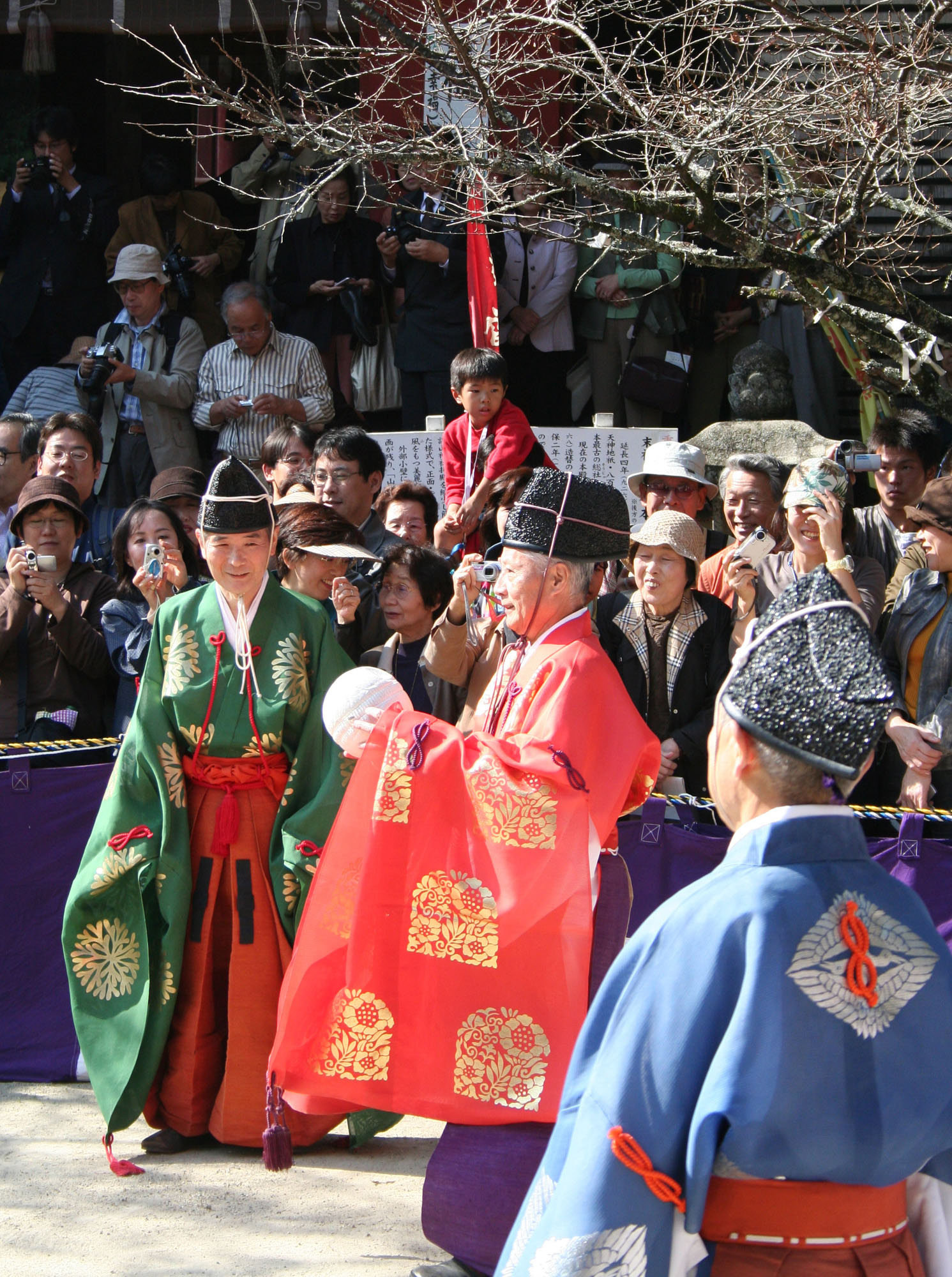|
Yamate Bluff
is the name of a historic neighbourhood in Naka-ku, Yokohama often referred to in English as ''The Bluff.'' The neighbourhood is famous as having been a foreigners' residential area in the Bakumatsu, Meiji and Taishō periods. While still dominantly residential in character, with views over downtown Yokohama, historic residential properties, ornamental gardens and public parks, the area is also a popular visitor destination. History When the Port of Yokohama first opened to foreign trade under the terms of the Treaty of Amity and Commerce in 1859, the foreigner's settlement was initially confined to a low-lying area known as Kannai. As commercial activity in the Kannai settlement rapidly outgrew the available space, construction on the elevated Yamate Bluff started in 1862. Initially a residential area for the foreign diplomatic community, one of the first structures to be built on the Bluff was the residence of the British Consul-General, Sir Rutherford Alcock. British Mi ... [...More Info...] [...Related Items...] OR: [Wikipedia] [Google] [Baidu] |
Harbor View Park (Yokohama)
Harbor View Hill Park ( = Minato no mieru oka koen), or Harbor View Park as it is usually called in English, is a public park on the Bluff, Naka-ku, Yokohama, Japan, looking over the Port of Yokohama. Overview Soon after the Port of Yokohama opened for foreign trade in 1859, the site of Harbor View Park was the location of the British Consul’s Residence. Between 1862 and 1875 the location also served as part of the camp for the British military garrison. Rebuilt in 1937, the British Consul’s Residence remained in use as Crown Property until 1969 until the building and surrounding gardens were returned to the City of Yokohama and turned into 72-hectare public park. The name of Harbor View Hill Park comes from a popular song of the same name, with the words and music by Tatsumi Azuma ( 東辰三). He was a resident of Kobe, another port city, so the song is also known as related to Kobe. Inside Harbor View Park are found: a rose garden, a large fountain, the British House ... [...More Info...] [...Related Items...] OR: [Wikipedia] [Google] [Baidu] |
HMS Waterloo (1833)
HMS ''Waterloo'' was a 120-gun first-rate ship of the line of the Royal Navy, launched on 10 June 1833 at Chatham. ''Waterloo'' was cut down to an 89-gun 2-decker and converted to steam at Chatham 1 April 1859 – 12 December 1859. Following the loss of the modern 101-gun steam 2-decker in 1861, ''Waterloo'' was renamed ''Conqueror'' in 1862. In 1864 she served on the China station under the command of Captain William Luard, and was paid off in 1866. In 1877 she was renamed HMS ''Warspite'' and served as a training ship at Greenhithe/Woolwich Woolwich () is a district in southeast London, England, within the Royal Borough of Greenwich. The district's location on the River Thames led to its status as an important naval, military and industrial area; a role that was maintained throu .... She was destroyed by fire in 1918, with 250 boys embarked at the time."The Warspite Fire". ''The Times'' (41718): Col B, p. 3. 20 February 1918. Three teenage boys later claimed to h ... [...More Info...] [...Related Items...] OR: [Wikipedia] [Google] [Baidu] |
Meiji Period
The is an era of Japanese history that extended from October 23, 1868 to July 30, 1912. The Meiji era was the first half of the Empire of Japan, when the Japanese people moved from being an isolated feudal society at risk of colonization by Western powers to the new paradigm of a modern, industrialized nation state and emergent great power, influenced by Western scientific, technological, philosophical, political, legal, and aesthetic ideas. As a result of such wholesale adoption of radically different ideas, the changes to Japan were profound, and affected its social structure, internal politics, economy, military, and foreign relations. The period corresponded to the reign of Emperor Meiji. It was preceded by the Keiō era and was succeeded by the Taishō era, upon the accession of Emperor Taishō. The rapid modernization during the Meiji era was not without its opponents, as the rapid changes to society caused many disaffected traditionalists from the former samu ... [...More Info...] [...Related Items...] OR: [Wikipedia] [Google] [Baidu] |
1923 Great Kantō Earthquake
The struck the Kantō Plain on the main Japanese island of Honshū at 11:58:44 JST (02:58:44 UTC) on Saturday, September 1, 1923. Varied accounts indicate the duration of the earthquake was between four and ten minutes. Extensive firestorms and even a fire whirl added to the death toll. Civil unrest after the disaster (i.e., the Kantō Massacre) has been documented. The earthquake had a magnitude of 7.9 on the moment magnitude scale (), with its focus deep beneath Izu Ōshima Island in Sagami Bay. The cause was a rupture of part of the convergent boundary where the Philippine Sea Plate is subducting beneath the Okhotsk Plate along the line of the Sagami Trough. Since 1960, September 1 has been designated by the Japanese government as , or a day in remembrance of and to prepare for major natural disasters including tsunami and typhoons. Drills, as well as knowledge promotion events, are centered around that date as well as awards ceremonies for people of merit. Eart ... [...More Info...] [...Related Items...] OR: [Wikipedia] [Google] [Baidu] |
Oyatoi Gaikokujin
The foreign employees in Meiji Japan, known in Japanese as ''O-yatoi Gaikokujin'' (Kyūjitai: , Shinjitai: , "hired foreigners"), were hired by the Japanese government and municipalities for their specialized knowledge and skill to assist in the modernization of the Meiji period. The term came from ''Yatoi'' (a person hired temporarily, a day laborer), was politely applied for hired foreigner as ''O-yatoi gaikokujin''. The total number is over 2,000, probably reaches 3,000 (with thousands more in the private sector). Until 1899, more than 800 hired foreign experts continued to be employed by the government, and many others were employed privately. Their occupation varied, ranging from high salaried government advisors, college professors and instructor, to ordinary salaried technicians. Along the process of the opening of the country, the Tokugawa Shogunate government first hired, German diplomat Philipp Franz von Siebold as diplomatic advisor, Dutch naval engineer Hendrik Harde ... [...More Info...] [...Related Items...] OR: [Wikipedia] [Google] [Baidu] |
Berrick Hall (1924–2016), economic historian
Berrick is a given name. Notable people with the name include: * Berrick Barnes (born 1986), Australian rugby union footballer * Berrick Saul Samuel Berrick Saul (30 October 1924 – 24 May 2016) was Vice-Chancellor of the University of York from 1979 to 1993. See also * Berrick Salome, village and civil parish in South Oxfordshire, England {{given name ...[...More Info...] [...Related Items...] OR: [Wikipedia] [Google] [Baidu] |
Dysentery
Dysentery (UK pronunciation: , US: ), historically known as the bloody flux, is a type of gastroenteritis that results in bloody diarrhea. Other symptoms may include fever, abdominal pain, and a feeling of incomplete defecation. Complications may include dehydration. The cause of dysentery is usually the bacteria from genus '' Shigella'', in which case it is known as shigellosis, or the amoeba '' Entamoeba histolytica''; then it is called amoebiasis. Other causes may include certain chemicals, other bacteria, other protozoa, or parasitic worms. It may spread between people. Risk factors include contamination of food and water with feces due to poor sanitation. The underlying mechanism involves inflammation of the intestine, especially of the colon. Efforts to prevent dysentery include hand washing and food safety measures while traveling in areas of high risk. While the condition generally resolves on its own within a week, drinking sufficient fluids such as oral ... [...More Info...] [...Related Items...] OR: [Wikipedia] [Google] [Baidu] |
Smallpox
Smallpox was an infectious disease caused by variola virus (often called smallpox virus) which belongs to the genus Orthopoxvirus. The last naturally occurring case was diagnosed in October 1977, and the World Health Organization (WHO) certified the global eradication of the disease in 1980, making it the only human disease to be eradicated. The initial symptoms of the disease included fever and vomiting. This was followed by formation of ulcers in the mouth and a skin rash. Over a number of days, the skin rash turned into the characteristic fluid-filled blisters with a dent in the center. The bumps then scabbed over and fell off, leaving scars. The disease was spread between people or via contaminated objects. Prevention was achieved mainly through the smallpox vaccine. Once the disease had developed, certain antiviral medication may have helped. The risk of death was about 30%, with higher rates among babies. Often, those who survived had extensive scarring of ... [...More Info...] [...Related Items...] OR: [Wikipedia] [Google] [Baidu] |
Rugby Union In Japan
Rugby union in Japan is a moderately popular sport. Japan has the fourth largest population of rugby union players in the world and the sport has been played there for over a century. There are 125,000 Japanese rugby players, 3,631 official rugby clubs, and the Japan national team is ranked 10th in the world. History Before the arrival of rugby, Japan was home to a game known as ''kemari'' ( ja, 蹴鞠), which in some ways was a parallel development to association football, and to a lesser extent rugby football. It is said that ''kemari'' was introduced to Japan from China in about 600 AD, during the Asuka period, and was based upon the Chinese sport of cuju. The object of Kemari is to keep one ball in the air, with all players cooperating to do so. The ball, known as a ''mari'', is made of deerskin with the hair facing inside and the hide on the outside. Kemari has been revived in modern times, and the players still wear the traditional costumes for the game. Early history L ... [...More Info...] [...Related Items...] OR: [Wikipedia] [Google] [Baidu] |
Christ Church, Yokohama
Christ Church, Yokohama (横浜山手聖公会 Yokohama Yamate Seikokai), is a historic Anglican church located in Yamate, Yokohama, Japan. Providing a center of worship for both Japanese and English-language congregations the church traces its foundation to shortly after the formal opening of the treaty port of Yokohama in 1859. The church building has been rebuilt and refurbished on several occasions as a result of fires, earthquakes and the incendiary bombing experienced during the later stages of the Second World War. Christ Church has been located on its current site in Yamate since 1901 and is part of the Yokohama Diocese of the Nippon Sei Ko Kai, the Anglican Church in Japan. History Early beginnings as the garrison church (1859–1901) After the opening of the treaty port in 1859, Anglicans in the foreign community initially gathered for worship services in the British consul's residence and later in the courtroom of the British consulate. Christ Church, with its promin ... [...More Info...] [...Related Items...] OR: [Wikipedia] [Google] [Baidu] |





